When you think about images of Irish style over the past century, what do you think of? Maybe it’s early Wild-Woman-of-the-West in her red shawl; perhaps it’s Irish Mammy in the good coat and headscarf; or it could be the Country Gent in his tweeds and flat cap.
Irish designers are as modern and forward-thinking as the rest of the fash-pack, but when you think about the most successful, enduring ones – John Rocha, Louise Kennedy, Paul Costelloe to name a few – their use of those traditional wools and tweeds, leathers and silks, gives more than a nod to the Wild Woman, the Mammy and Country Gent.
And so with both tradition and modernity in mind we chart the key looks over the past century.
1910s The Tara Brooch

While the beau mondes of the Belle Époque donned their feather boas and furs, Irish women dipped back into Celtic myth and pinned their serge suits with precious stone-encrusted brooches. The elaborate pins were inspired by the Tara Brooch, which was created for a medieval chieftain to proclaim his top-o’-the-clan status and, presumably, to save his blushes by keeping his seamless cloak on his manly shoulders.
The Tara Brooch, discovered in 1850 and much copied since, is a stunning, ornate piece, though masculine, almost weapon-like, its long pin strong enough to bore through layers of rough cloth. Perhaps this is why the nationalist organisation, Inghinidhe na hÉireann (Daughters of Ireland), used a Tara Brooch as their membership badge, pointing to an earlier time that they felt represented a pure Irish identity.
When they merged with Cumann na mBan in 1914, the new organisation looked for a fiercer emblem. The Tara Brooch, evocative of the medieval sword, was replaced with the realism of a rifle entwined with the letters CnamB. But many of the old guard preferred the subtlety of the Tara Brooch, including gun-toting Countess Markievicz, pictured here in 1918.
1920s The shawl
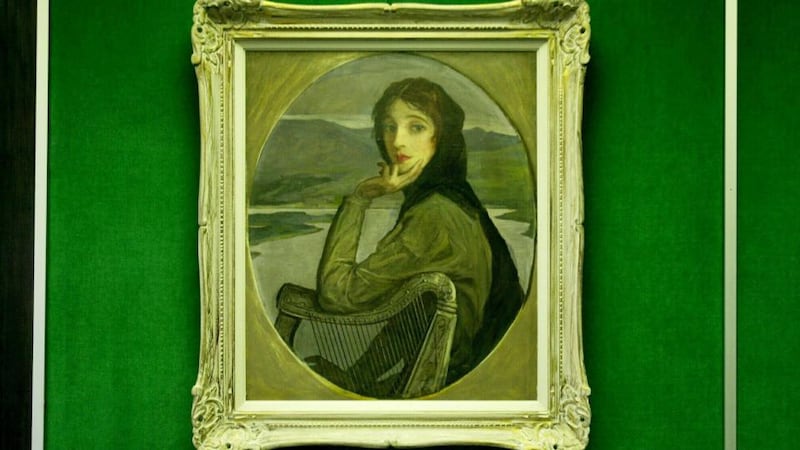
It didn’t start with Pegeen Mike, it was around a lot earlier, but mention the word shawl and Synge’s leading lady, shrouded and lamenting the loss of her playboy, leaps to mind. Pegeen was no fashion plate, but decades later, in the 1990s, the nation was awash with shawls of a different kind.
The pashmina, luxurious, glamorous, many-hued, was embraced by a nation of female race-goers and wedding guests. We had drawers full of them, in every shade, practical in a country known for gale force winds howling across its tracks.
But the shawl, as a historic garment, has another, more hauntingly beautiful image. In the 1920s, new Irish banknotes were issued with a picture of traditional Irish womanhood – Cathleen ní Houlihan, with her wool shawl perfectly framing her beautiful face. The picture was painted by Sir John Lavery in 1923, the model his wife, Hazel; the irony . . . that she was American. Even though this cool foreign beauty won the ironic spot on our banknote, perhaps the roughly honed Pegeen Mike, all anger and emotion, would have been truer to us.
1930s The Aran sweater
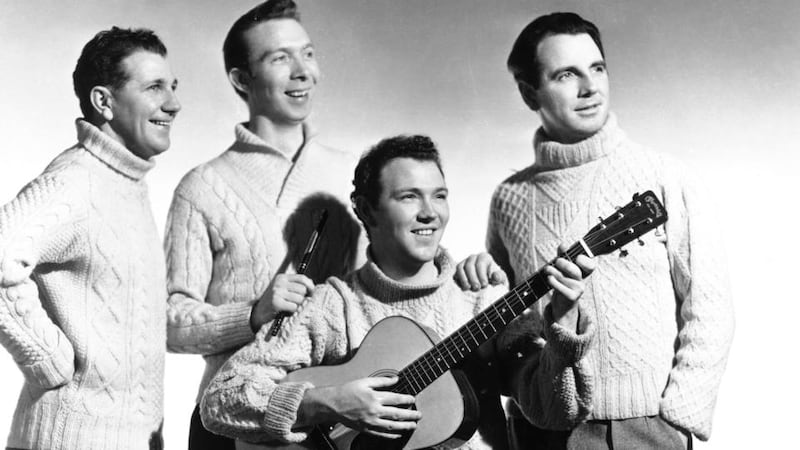
Europe had Romantic Man staring in wonder at the Alps, but in the 1930s, thanks to American documentary filmmaker, Robert Flaherty, romantic Ireland's Man of Aran took to the stormy seas of the Atlantic Ocean.
Through Flaherty, the fishermen’s rugged faces and rough workwear in serge and wool came to international attention. The Aran jersey, originally handknit from heavy, unbleached wool, evoked a life of hardship and adventure. Each pattern in the Aran has meaning – cable stitching represents fishermen’s ropes; honeycomb denotes bees hard at work; and the diamonds symbolise the network of island fields. It was in the 1930s when the Aran went commercial, as softer merino wool started to be used, sometimes mixed with silk, alpaca or cashmere, to make them lighter and softer, albeit no longer waterproof.
Some 20 or 30 years later, another romantic Irishman, Liam Clancy, along with his Clancy Brothers, transformed the Aran sweater into a must-have fashion item for Irish Americans. Until then any non-fisherman wearing a geansaí was a tourist or beardy mountaineer, but the sight of Liam and the boys strolling on a Greenwich New York sidewalk, to meet his mate Bob Dylan for a pint, brought the Yanks flocking in droves to buy a báinin.
Since then, many fashion brands and designers have used Aran stitching for inspiration – Peter O’Brien created an Aran-inspired evening dress studded with rhinestones for Rochas in 1993 (it’s now in the Ulster Museum); even Jean Paul Gaultier dabbled in Aran in 1985, creating a (it has to be said, questionable!) man’s suit with tight trousers and hat.
1940s The headscarf
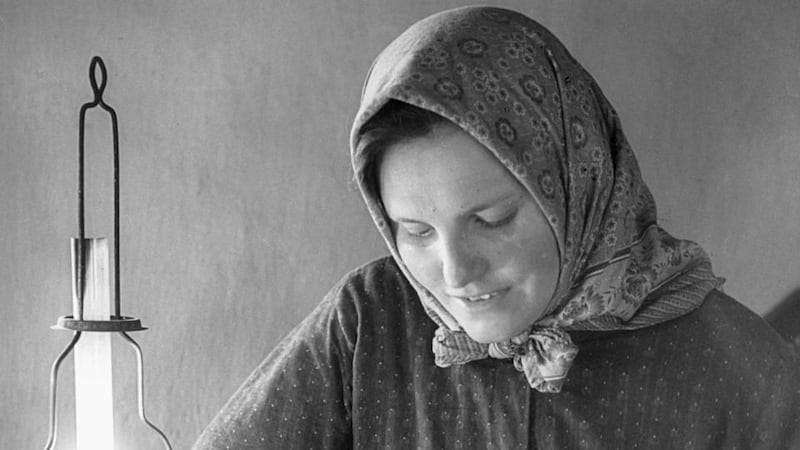
In any prevailing image of the traditional Irish mammy, she’s wearing a headscarf. In rayon, chiffon or silk, the headscarf is firmly knotted under her chin. These were the war years when, across the water, the same scarves were knotted atop Land Girls’ heads, while here women battled daily with rationing. Accessible fashion hadn’t been invented yet, so the headscarf was one of the few ways women could express their joie de vivre.
As a fashion statement, the mammy-headscarf, along with the mantilla, disappeared round about 1970 and is one of the few pieces never to have made a comeback.
Yes, scarves are still covetable – you just have to look at the success of Alexander McQueen’s skull-print squares now celebrating their 10th anniversary, or walk into any Hermés store, to know that they are highly desirable, but they are now worn around the neck or fixed to a bag. There’s something about that tight knot under the chin that tightens facial features, suggesting an old narrow-mindedness, totally unjustified, but most unflattering– long may it stay in retirement.
1950s The tweed suit
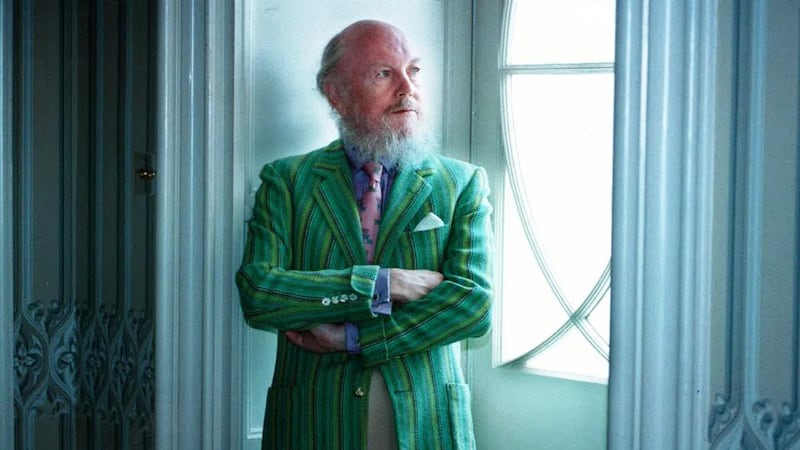
While Chanel created her boxy tweed jacket edged with grosgrain – muttering profundities like, “fashion passes, style remains” – Ireland had its own tweedy champions.
Our designers’ insights may have been somewhat more, well, tweedy, like Sybil Connolly’s famous line that women should show their curves not their joints, but they were an emerging force in the international fashion world of the 1950s, and at its core was the tweed suit.
This was the era before disposable clothing, when the good suit was a wardrobe essential, made to last.
We had the best tweed manufacturers in the world, such as Donegal-based Magee and McNutt’s. It was when, in the 1950s, these companies started to work with designers such as Irene Gilbert, Neillí Mulcahy and Ib Jorgensen, creating lighter blends, adding bright silk linings, and fur and leather trims, that the tweed suit, previously worn only to mass on Sundays or “to town”, took on a new glamour.
The glitterati, first ladies and socialites alike, channelled the new elegance sans Chanel. And the literati – Hon Garech Brown, JP Dunleavy et al – brought an aspirational quality to the country squire look. Decades later, the tweed suit still has a celebrity following.
1960s The mini
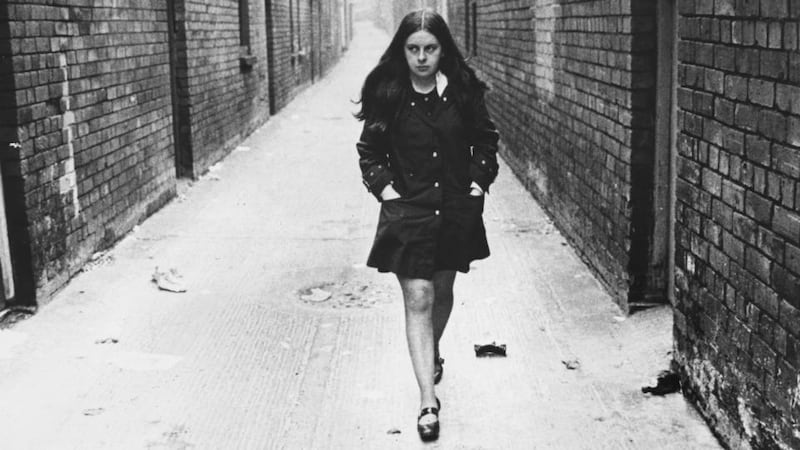
While the mini skirt in Britain was personified by Twiggy, all stick legs, gamine haircut and false eyelashes, Ireland had a very different mini-embodiment. A young civil rights campaigner called Bernadette Devlin was busy wielding a loudhailer and a banner. This was the 1960s, when political action was the bastion of middle-aged men in heavy wool suits and overcoats.
Devlin was a powerful voice, perhaps because she was an incongruous figure, for two reasons: her youth and her mini skirts. She was just 21 in 1969 when the Battle of the Bogside took place. This was a key moment in the struggle and, though Devlin was subsequently jailed for four months for inciting a riot, she also went on to become the youngest British MP that same year.
But if this Derry girl was proclaiming into a microphone for all kinds of justice, there was another, singing into a different microphone, for all kinds of everything. As one decade finished and another began, 16-year-old Dana sat atop a high stool and sang for Ireland at Eurovision 1970. She too wore a mini, this time an ivory dress with Celtic designs down the front. Her voice was sweeter than Devlin’s, but no less powerful in gaining world attention.
1970s The cape
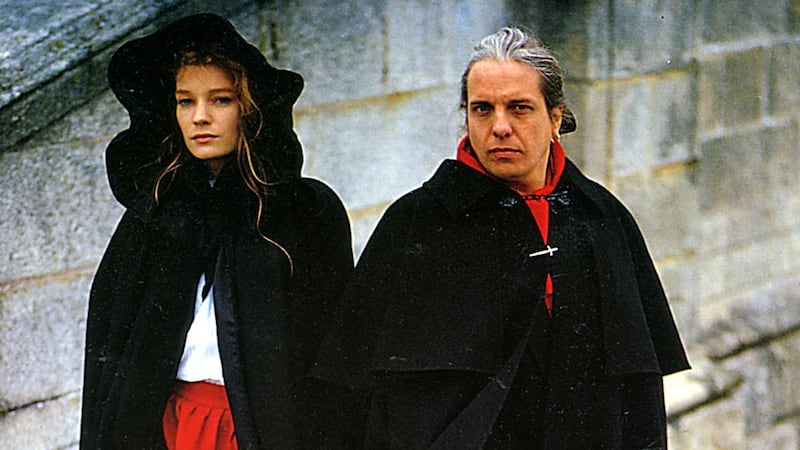
The cape or cloak may have its roots in our historical past, but it was President Hillery and his wife Dr Maeve Hillery who championed it in more modern times. The president opted for a caped coat or shoulder-cape (made by Louis Copeland). Some say it was to give him character: to enhance his lack of charisma, but the effect was more Sherlock Holmes and, given that he often smoked a pipe, well, it was all a bit elementary my dear.
But Maeve had greater fashion sense and more success with the cape. She wore a cape – belted, in gold-flecked, hand-dyed, hand-woven tweed – to her husband’s inauguration in 1976. She chose gold to match the predominantly blue with gold décor of St Patrick’s Hall, Dublin Castle, where the inauguration took place. This was the first of many capes she was to wear as first lady. Capes were highly fashionable garments during 1960s and 1970s, with Ireland’s then leading designers, including Neillí Mulcahy, Ib Jorgensen and Sybil Connolly, including them in their collections.
1980s The frock
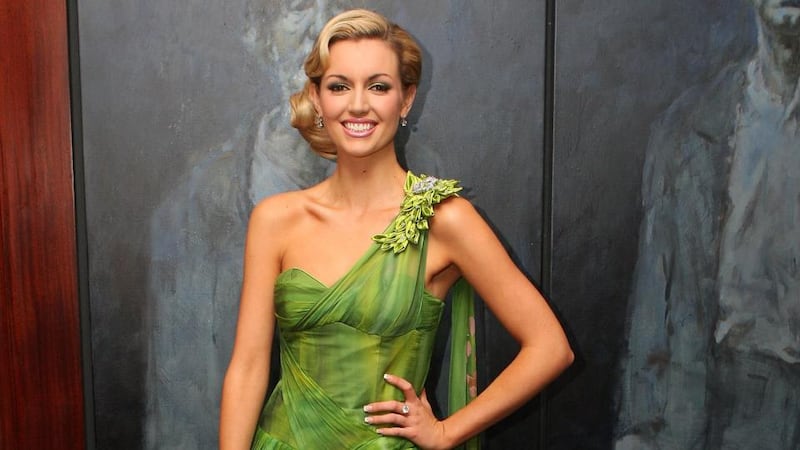
Perhaps it was Diana and Charles' wedding in 1981, or maybe it was Dallas or Dynasty, but the 1880s was when we embraced full-on, fabulous glamour. Out went the hippy-dippy 1970s, in came taffeta frocks, big hair and glossy make-up.
As high-street shopping took off, the idea that clothes had to be sensible and last for years became old hat. Inspired by a younger breed of fashion icons, we realised that we could all be princesses, even if just for a day. And every princess needs a frock, one in which she can sweep into a room, into the arms of her prince and dance until dawn.
Thus the taffeta years were born, patronised by Roses of Tralee, Eurovision presenters and debutantes from all over Ireland, in their Kelly green or fuchsia or royal blue watermark silk, complete with full skirt, sashed double-bowed waist and puffed sleeve. Thirty years on, at The VIP Style Awards and the IFTAs, the dress is less pouffy, but the princess dream hasn’t changed – intricate up-styles and false tans are testament to that.
1990s The polo neck
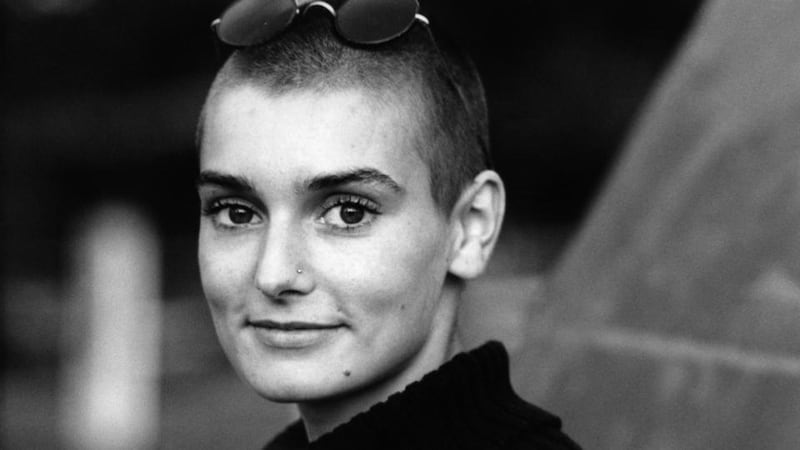
When our first female president needed to be taken seriously among predominantly male international leaders, she chose the polo neck.
To be fair, what she actually chose was a smartly tailored suit, but the problem of what to wear underneath has plagued many a female leader before president Robinson’s inauguration in 1990, and since, with mixed results.
Maggie Thatcher’s pussy bow blouses looked fussy and middle-aged; Angela Merkel’s tendency towards lower necklines with a necklace is distracting and Christine Lagarde’s scarves can, on occasion, outshine her soft-spoken persona. The polo, with its smooth, clean lines, keeps the look simple and says: “I’m in control.” It is also the perfect canvas for a classic neckpiece, which Robinson chose to perfection.
The beginning of the decade, in1990, was also the year that another polo neck received international attention. Sinead O'Connor wore a simple black one when she sang Nothing Compares to You. Its starkness, combined with her shorn head and eyes brimming with tears touched hearts all over the world. The polo, until then the bastion of CND campaigners, intellectuals and RTÉ TV male presenters, had found a new, stylish following.
The Noughties The racing hat
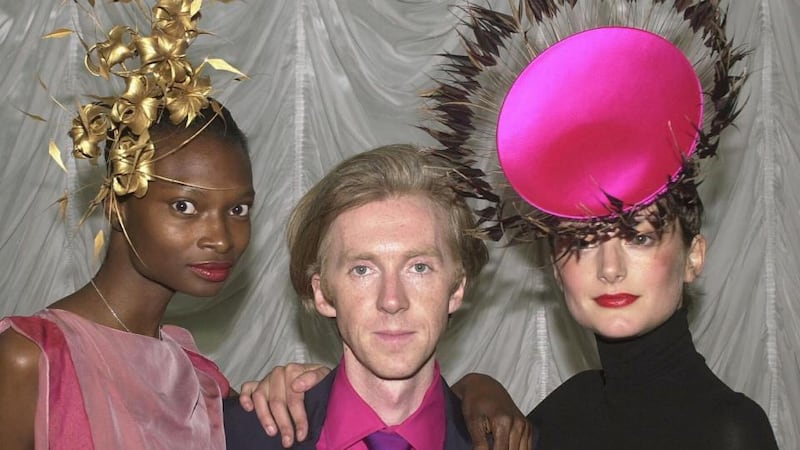
Picture this: Punchestown, April, the National Hunt Festival; there’s a howling, torrential gale beating across the flat open course, and women with bare legs, short dresses and feathery fascinators are running from tote to parade ring with not a coat or brolly between them.
Fabulous or ridiculous? Well, of course it’s ridiculous in our weather but, still, fancy hats refuse to go away. Our fascination with fascinators seems here to stay, along with best-dressed competitions at race courses all over the land. With prizes like a car or a €10,000 shopping spree, it’s worth going all out, and for that you need a hat.
Everyone knows, you won’t win without one. It’s an Irish phenomenon, undimmed by recession, as fixed in our psyche, as our passion for the track.














